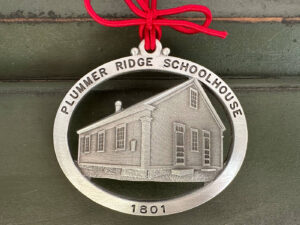
Our Commitment to Keeping History Alive
When brothers Bard and Joseph Plummer were each given tracts of land in the 1700s by their father who was a magistrate, or judge, in Rochester, the town was known as the Northeast Parish.
 Settled in 1760, the Town of Milton flourished as a farming town. During the Industrial Revolution, Milton became a booming mill town. Milton Ice Company and several others were drawn to the “Three Ponds” for its abundance of ice. Blocks of ice were harvested, stored and shipped via rail to Boston and other eastern cities along the seacoast. In 1880, as many as 100 carloads of ice a day were carried along these iron rails that still exist today!
Settled in 1760, the Town of Milton flourished as a farming town. During the Industrial Revolution, Milton became a booming mill town. Milton Ice Company and several others were drawn to the “Three Ponds” for its abundance of ice. Blocks of ice were harvested, stored and shipped via rail to Boston and other eastern cities along the seacoast. In 1880, as many as 100 carloads of ice a day were carried along these iron rails that still exist today!
Jonas Spaulding opened a leatherboard mill in Milton, producing containers, lunch boxes and even violin cases. The abundance of water provided by the Three Ponds also helped Ira Jones build water powered factories, dams and hydroelectric goods. The prosperity that emerged during the Industrial Revolution attracted many factory workers and their families to Milton. And with the increase in families and children, there came a demand for schools.

The School Houses of Milton
In its heyday, there were four school houses in Milton. Today, only two remain. The most elaborate of these is the Milton Mills schoolhouse built in 1875. It is very ornate, featuring the French Second Empire style which boasted a bell tower and a mansard roof. The original bell is still in the tower. After it ceased being a school, it was transformed into the Milton Mills Free Public Library.
The oldest remaining schoolhouse is the one room schoolhouse on Plummer’s Ridge, located about a half mile south of the New Hampshire Farm Museum, circa 1800. A true one room schoolhouse, it taught generations of Milton school children: Jones, Plummer, Doe, Pugh, Twombley. The building had two separate entrances: one for the boys and the other for the girls. This is the very same school that Robert Edmond Jones (1887 – 1954) attended. Imagine the humble beginning where young Robert studied and was inspired!

Upon further inspection, the woodstove stands ready to warm the class. There are also desks and a chalkboard from days gone by.
One has only to close his eyes and imagine the children like Robert Edmond Jones who were taught in a very simplistic setting such as the Plummer’s Ridge Schoolhouse. In 1911, the school closed. After Robert graduated from Nute High School, he attended Harvard. Eventually, he went on to revolutionize stage design, creating stage sets for more than sixty Broadway shows. Later on, in the 1930’s, Jones pioneered technicolor filming in Hollywood.
The Restoration

At the March, 2024 Milton Town meeting, the townspeople voted to transfer ownership of the historic Plummer Ridge Schoolhouse to the New Hampshire Farm Museum. The very same schoolhouse that Robert Edmond Jones attended as a boy in the 1800s! The targeted goal to move it to the New Hampshire Farm Museum and renovate it is the Spring, 2027. Once relocated, the schoolhouse will be incorporated in various programs that will allow visitors to authentically experience rural life, much as Robert Edmond Jones did as a young boy.
A project this big, however, is immense and needs your support. Won’t you consider making a donation, no matter how big or small, to move this 223 year old gem to its new home at the Museum? Donations are simple! Simply enter your donation amount and proceed to checkout. You’ll have the satisfaction of knowing that you’re playing an important role in preserving this historic one room schoolhouse!
How to support this project
You may donate online through our website or donate by mail by sending a check to:
The New Hampshire Farm Museum
Attention: Dean Giffin, Treasurer
P.O. Box 644
Milton, NH 03851
Please earmark “Plummer Ridge Schoolhouse” in the memo section, so we are sure to put the money into this project!
Buy a Plummer Ridge Schoolhouse ornament!
Photos Wanted!
As we start down the exciting road to restoring the Plummer’s Ridge Schoolhouse, we’re also looking to create a photo history of the school. If you or someone you know has any photos of the school, please email them to our web developer at curio.museum@gmail.com along with any information that you may have about the photo.
She is going to create an online photo history for the school and will make sure that the museum has the photos stored in a safe location where we can easily access them.
Have a photo but no way to scan it?
No problem! With a little care, you can actually photograph old photos with your phone. Just make sure you take the photo straight on and do your best to avoid glare. NOTE: No need to crop, size, sharpen, or adjust any of your photos. Our designer will do all that for us!
If you know someone who may have a photo, please let them know! Thank you!!


